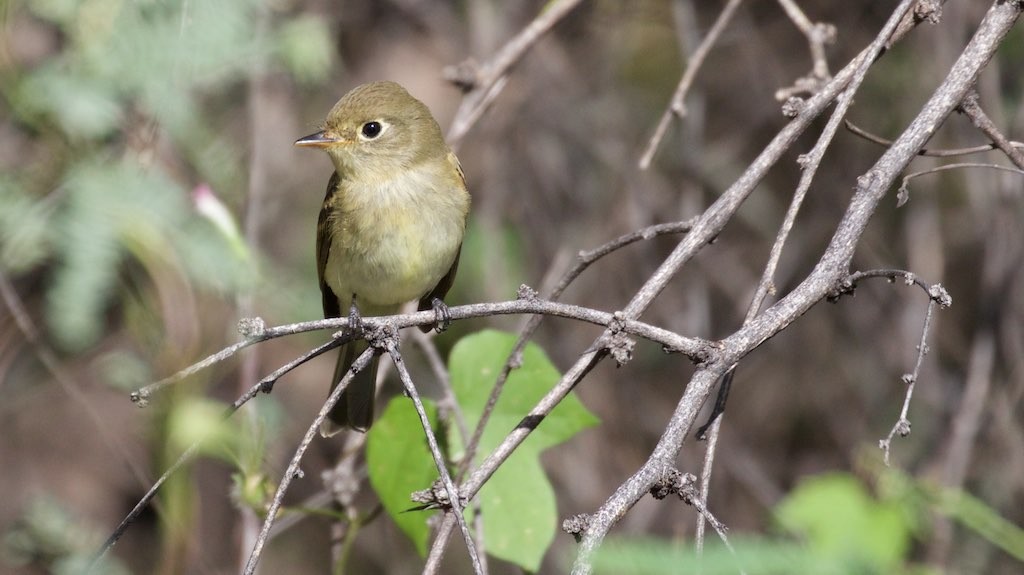Pacific-slope Flycatcher
A species of Empidonax flycatchers Scientific name : Empidonax difficilis Genus : Empidonax flycatchers
Pacific-slope Flycatcher, A species of Empidonax flycatchers
Botanical name: Empidonax difficilis
Genus: Empidonax flycatchers
Content
Description General Info
Description
In plumage, the Pacific-slope flycatcher is virtually identical to the Cordilleran flycatcher, and differs only subtly from most Empidonax flycatchers in North America, but its breeding habitat and call are different. Its call can vary slightly by different regions and the bird itself. 
Size
14 cm (5.5 in)
Colors
Black
Green
Bronze
Gray
White
Life Expectancy
6 years
Nest Placement
Cavity
Feeding Habits
Pacific-slope Flycatcher predominantly consumes flying insects caught mid-flight or gleaned from vegetation, including beetles, flies, moths, and caterpillars. They also feed on spiders and berries, hunting from tree interiors and sallying beneath canopies. Their feeding behavior includes perching and chasing flying prey, and they help control insect populations, particularly mosquitoes.
Habitat
Pacific-slope Flycatcher's habitat includes coniferous and deciduous woodlands, often near water with partially open canopies. This bird inhabits a broad altitudinal range from lowlands to mountainous regions and thrives in diverse vegetative areas featuring a mix of tree species. Its preferred environments possess dense understories in ravines and canyons, suitable for both breeding and migration activities.
Nest Behavior
The female pacific-slope Flycatcher builds the nest, lines it with grass and hair, and may lay eggs using materials such as paper or yarn. Pacific-slope Flycatcher demonstrates attentive parental care, although specifics of egg-laying patterns and care for young require further elaboration.
Nest Characteristics
Pacific-slope Flycatcher's nest is often situated in trees, shrubs, cavities, banks, overturned tree roots, or man-made structures. It is supported from below and the side. The elaborate cup nest is constructed by the female, who uses spiderweb, bark, leaves, grass, moss, lichen, and sometimes man-made items for disguise and comfort, measuring 4.7 inches wide.
Dite type
Insectivorous
General Info
Feeding Habits
Bird food type
Bird Feeder Type

Small Tube Feeder

Platform
Sounds
Call
Recording location: United States
Behavior
Pacific-slope Flycatcher exhibit territorial behavior, with males singing to establish domains and attract mates, actively repelling rivals. Their territories, ranging from 2.5 to 8.7 acres, usually feature canopy gaps enhancing foraging and suitable nesting locations such as ravinesides or human structures. Males sing persistently until pairing, then primarily at dawn during nesting. Seemingly monogamous, both parents partake in incubation and nurturing their young.
Species Status
Not globally threatened.
Scientific Classification
Phylum
Chordates Class
Birds Order
Perching birds Family
Tyrant flycatchers Genus
Empidonax flycatchers Species
Pacific-slope Flycatcher 